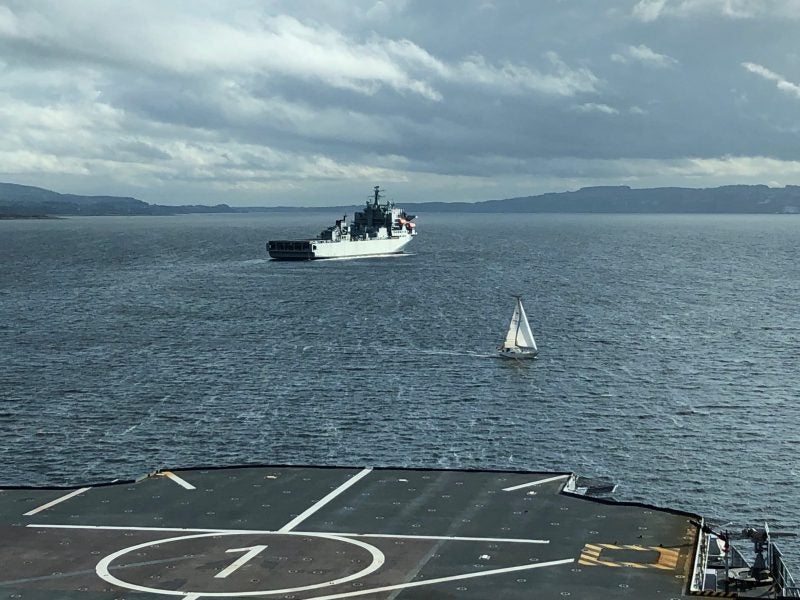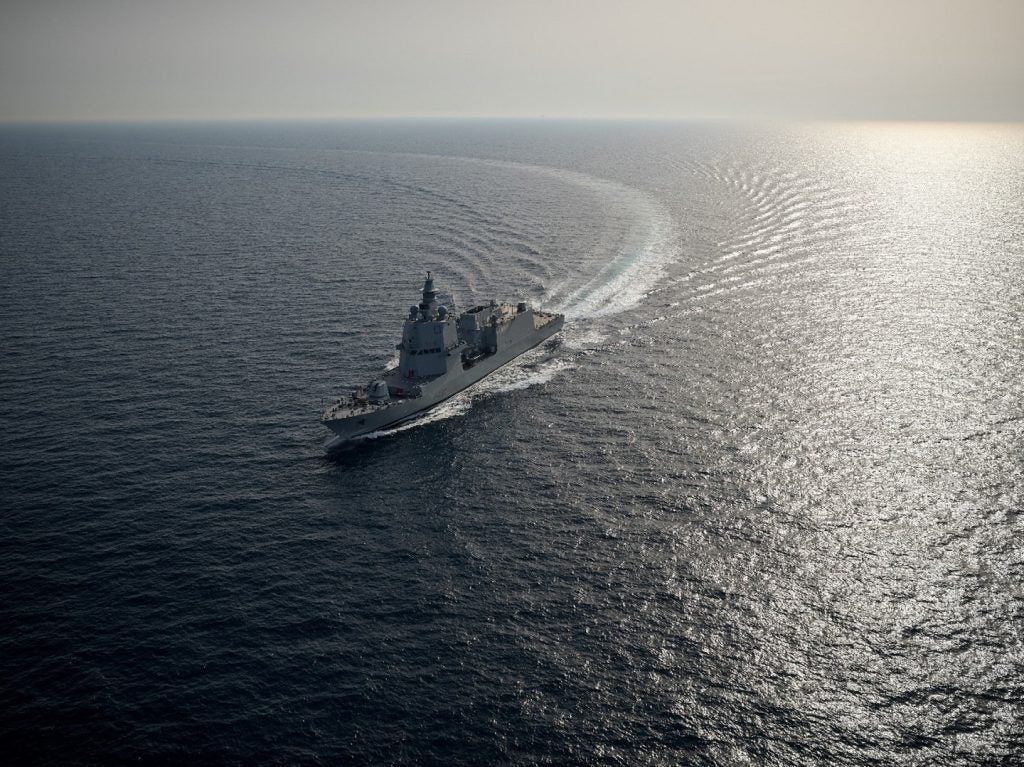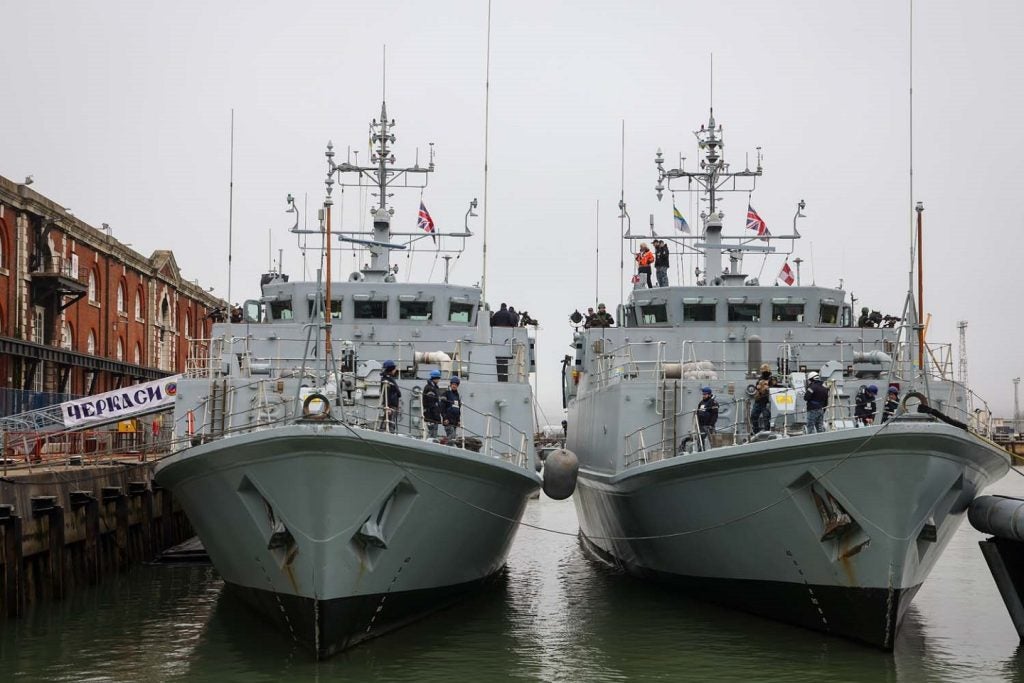
The chief of the Royal Navy First Sea Lord Admiral Tony Radakin and his French counterpart Admiral Christophe Prazuck yesterday signed an agreement to develop closer naval collaboration between the UK and France.
The two signed the agreement at the end of Exercise Griffin Strike yesterday on the bridge of the French amphibious assault ship FS Tonnerre in the presence of members of both countries’ navies. The joint statement issued by Radakin and Prazuck reaffirmed hopes to make the Anglo-French Combined Joint Expeditionary Force (CJEF) fully operational by the summer of next year.
This leaves the land and air components left to reach operational capability, which is expected to be achieved early next year and achieve the CJEF’s goal of full operational capability by mid-2020.
In the joint statement seen by Naval Technology, both Admirals praised the success of Griffin Strike in building up the UK and France’s joint maritime operations, saying: “We are determined that it should endure and flourish long into the future”.
The joint statement also commits the UK and France to further defence cooperation through the development of future missile systems and mine counter-measures. It also provides the framework for mixed Anglo-French carrier strike groups, increasing both navies’ global footprints.
 First Sea Lord Admiral Tony Radakin and Chef d’état-major de la Marine Admiral Christophe Prazuck sign joint statement on Anglo-French defence ties.
First Sea Lord Admiral Tony Radakin and Chef d’état-major de la Marine Admiral Christophe Prazuck sign joint statement on Anglo-French defence ties.
How well do you really know your competitors?
Access the most comprehensive Company Profiles on the market, powered by GlobalData. Save hours of research. Gain competitive edge.

Thank you!
Your download email will arrive shortly
Not ready to buy yet? Download a free sample
We are confident about the unique quality of our Company Profiles. However, we want you to make the most beneficial decision for your business, so we offer a free sample that you can download by submitting the below form
By GlobalDataSpeaking on the bridge of the FS Tonnerre, Radakin told Naval Technology: “France and the UK are the two leading maritime powers in Europe and so working with a partner that has similar values, similar interest, but from a military point of view has very similar capabilities, aircraft carriers, nuclear submarines, nuclear deterrents and some great amphibious forces, frigates and destroyers.
“That is a fantastic partner to be working with a partner of such quality. And what it gives us is a partner that we can measure to the world, whether that’s to deter or threaten if necessary.”
Prazuck echoed this, telling the press: “The significance of what we’re doing today is the ability to operate together in a complex environment of joint operations which means an army, air force and navy of the two countries.
“We have been working hard for many years to achieve operational capabilities next year for this combined and Joint Force, which will allow our two countries to operate together to face any crisis.”
Throughout Exercise Griffin Strike 2,000 personnel, 14 surface vessels, three attack submarines and a range of aircraft from the UK and French Armed Forces, were controlled by a portable operations room operated by a 50/50 split of British and French staff.
Next year will mark the 10th anniversary of the Lancaster House Treaty, which laid down plans for the CJEF. The force sits outside of existing EU and NATO agreements allowing the UK and French governments to quickly react to threats, while also providing NATO with a force that can react at a moment’s notice.
Radakin added: “These are two NATO nations working more closely together and it formerly sits outside of NATO. But, we’re both big players within NATO. What it means is that at its heart, it creates more political choice for both of our governments.
“So if there was a particular situation where we wanted to respond potentially more quickly than taking the time for all of NATO to agree that he wanted to act, then both our governments might be able to do that.”
Radakin added that it also meant that if other NATO allies were not able to respond, in theory, if the governments of the UK and France wanted to deploy the force they would have the flexibility to do so.
Exercise Griffin Strike was undertaken over two phases, beginning with the CJEF forming up at sea and then beginning a tactical phase once the force arrived at Faslane. In the tactical phase, the force was deployed in a ‘fictional’ region facing instability and the threat of a hostile number. Test operations covered all branches of the maritime aspect, including RFA Argus, a hospital ship, having to deal with a mass casualty incident.
Radakin and Prazuck closed the day issuing a joint speech to personnel from the UK and France praising their work over the length of the exercise, with Prazuck saying there is no doubt that the CJEF gives both countries the operational capabilities that they need. He added: “We need to able to conduct more difficult missions.”
Radakin added: “To be able to work together with the confidence that we have, I think is an enormous success and it should give us enormous confidence for the future.”
The now-operational maritime aspect of the CJEF provides France and the UK with the tip of the spear, offering the ability to implement embargoes, secure sea lanes and allow land and aerial forces to enter an area of operations from the sea.






